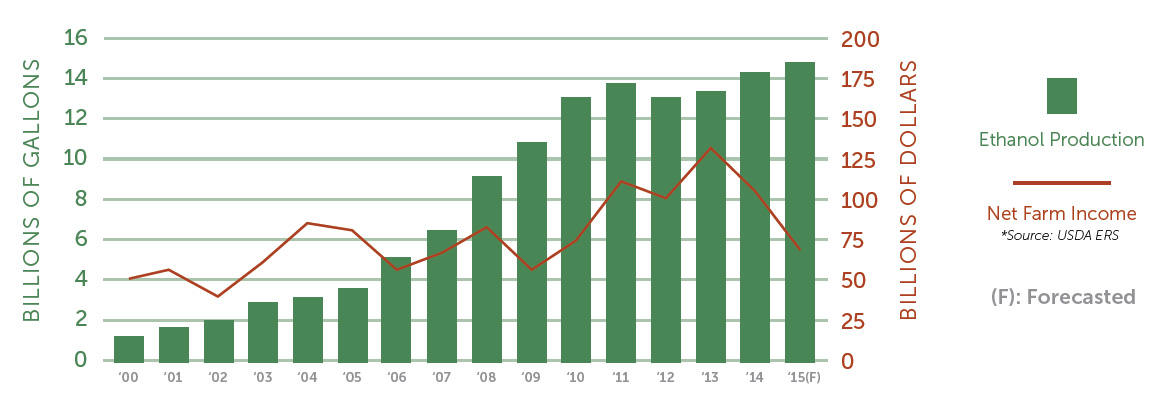I was 14 years old when my dad decided our family needed to find a new way to market low-priced corn. At the time, the federal government was paying farmers to store corn. They were also paying farmers to idle land by paying them to “set aside acres.” Corn was selling for $1.30 a bushel while it cost $2.75 a bushel to grow. And there seemed to be no end in sight. My dad knew there had to be a better way. My dad believed in hard work and was blessed with good old fashioned common sense. It didn’t seem logical to him to be paid to be less productive. But he did understand the additional value ethanol production could bring to this excess grain, so the decision was made to start producing ethanol right there on the family farm.
Dad was right. Since that small, humble start, the industry has grown and created an entirely new market for corn and helped bring new opportunity to rural America and family farms across the Midwest. In fact, ethanol played a major role in increasing land values by as much as 300% in areas surrounding our plants from 2008 to 2014.
Take a look at this graph below. The relationship between growing ethanol production and strong net farm income is undeniable. However, the E10 blend wall that has resulted from regulatory issues in Washington has caused a plateau in ethanol production that is having a ripple effect throughout the ag economy. Perhaps the most obvious sign is the recent reductions in farm income and land values.
At this important time for agriculture, it is critical that farmers let their senators and representatives know how important the ethanol industry is to the American farm and our local economies. If lawmakers turn their backs now, we’re bound to see depressed farm incomes and much lower land values.
The current national yield average is 160 bushels of corn per acre, but I’ve seen technology that exists today that can boost yields to over 300 bushels. Where is all of this new corn going to go? If you look at uses of corn over time, ethanol is the only viable alternative use for this excess corn. The oil industry would prefer to keep us at a 10 percent blend to maximize their volume and profits, but ethanol production must continue to increase in the face of increasing corn yields if we are going to have a stable ag economy.
Make no mistake – the battle over our world’s fuel supply is underway. Big Oil and Agriculture are at war. If oil wins this battle and ethanol fails to move beyond a 10 percent blend, consumers will inevitably see high prices at the pump and farmers will see decreasing farm income and land values for years to come.
I invite you to join me, POET and Growth Energy in this battle. It will take drive, passion and investment from all of us. Farmers, agriculture companies and ethanol producers need to band together. As with all great battles, it will be difficult and take perseverance, but the rewards can be great. Join Growth Energy at www.growthenergy.org to learn more about what you can do to help us win.
General Douglas MacArthur once said, “It is fatal to enter any war without the will to win it.” Like it or not, we are already in this war and I am certain if we all work together we will bring home a victory for our investors, our farmers, our country and our world.








